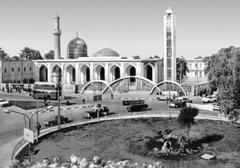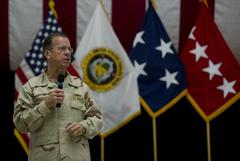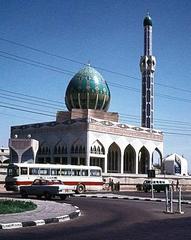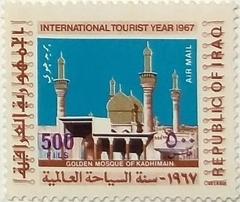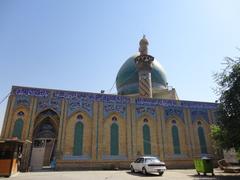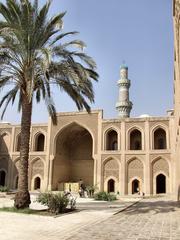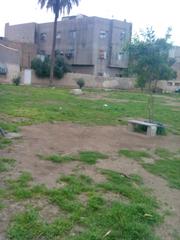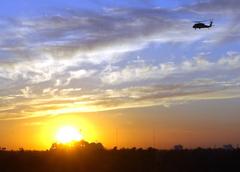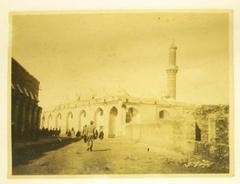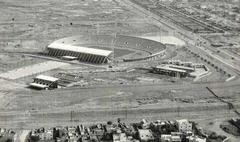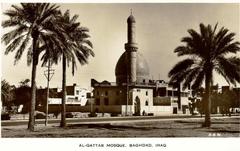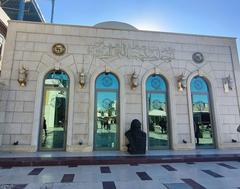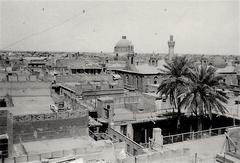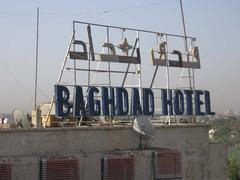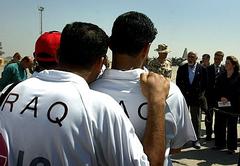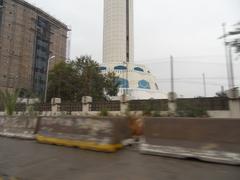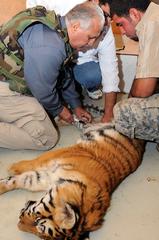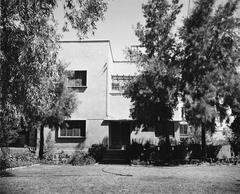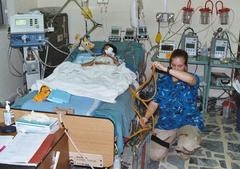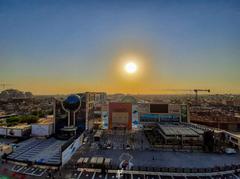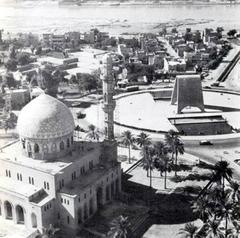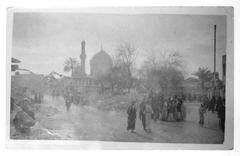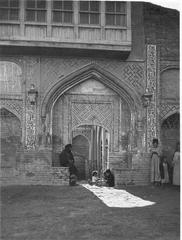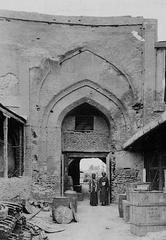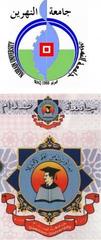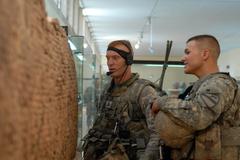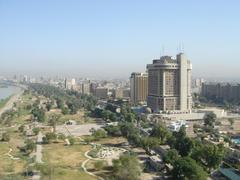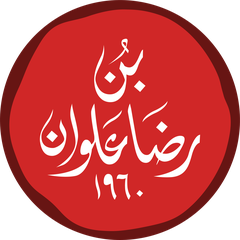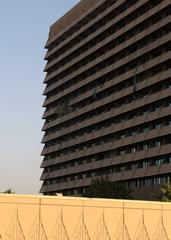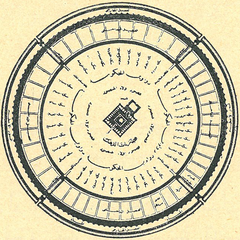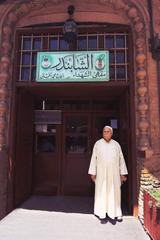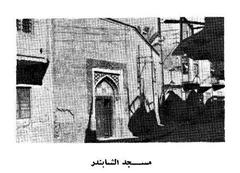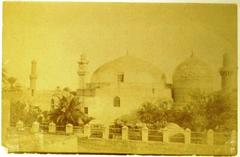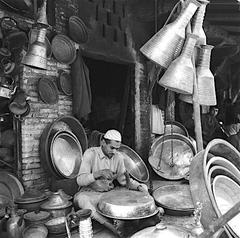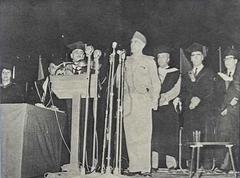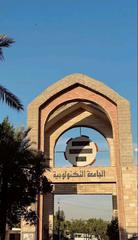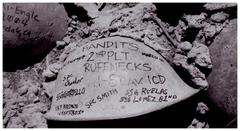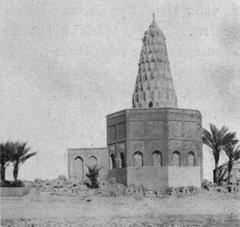Al-Musta‘Sim Billah Mosque: Visiting Hours, Tickets, and Historical Significance in Baghdad, Iraq
Date: 03/07/2025
Introduction
The Al-Musta‘Sim Billah Mosque, nestled in the heart of Baghdad’s al-A’dhamiyya district, stands as both a spiritual sanctuary and a living testament to the city’s illustrious Islamic heritage. This historic mosque commemorates the last Abbasid caliph, Al-Musta‘sim Billah (reigned 1242–1258 CE), and embodies centuries of religious, architectural, and cultural evolution. Today, the mosque not only welcomes worshippers and scholars but also invites travelers to explore its rich tapestry of history, resilient architecture, and contemporary role within Baghdad’s vibrant urban landscape. This guide provides comprehensive information on the mosque’s historical context, architectural features, visiting hours, ticketing, accessibility, and practical tips for an enriching visit (Iraq Travel Tales; qm.org.qa; Beyond the Bucket List).
Table of Contents
- History and Cultural Significance
- Architectural Features
- Religious and Community Role
- Restoration and Preservation
- Practical Visitor Information
- Nearby Attractions
- Travel Tips
- Frequently Asked Questions (FAQ)
- Conclusion
- References
History and Cultural Significance
Origins and Historical Context
Founded during Baghdad’s golden Abbasid era, the mosque is closely associated with Al-Musta‘sim Billah, the dynasty’s final caliph. His reign witnessed both a cultural zenith and, with the Mongol invasion of 1258, the tragic fall of the Abbasid Caliphate. The mosque’s survival through this tumultuous period and subsequent centuries of conflict underscores its enduring role as a symbol of Baghdad’s resilience and religious heritage. As the burial site of Al-Musta‘sim Billah, it is a place of reflection on the city’s intellectual and spiritual legacy (Wikipedia).
Architectural Features
The mosque represents the architectural ingenuity of the Abbasid period, blending medieval craftsmanship with later renovations. Key features include:
- Hypostyle Prayer Hall: Supported by rows of columns, accommodating large congregations and fostering communal worship.
- Mihrab and Minbar: The mihrab, adorned with intricate stucco and geometric patterns, marks the direction of Mecca; the minbar serves as the pulpit for sermons.
- Minaret: A prominent, modestly scaled structure typical of Abbasid design, serving as both a visual landmark and the platform for the call to prayer.
- Courtyard (Sahn): An open central area, flanked by arcaded porticoes (riwaqs) for shade and social gatherings.
- Materials: Predominantly baked brick and lime mortar, with wooden beams supporting the roof—a hallmark of Mesopotamian architectural tradition (qm.org.qa; academia.edu).
The mosque’s decorative program—featuring Kufic inscriptions, geometric tilework, and carved stucco—reflects the Abbasids’ appreciation for both artistry and the written word.
Religious and Community Role
Historically, the mosque served as a major congregational center for Sunni Islam in Baghdad, hosting Friday prayers, religious festivals, and scholarly gatherings. It continues to function as a focal point for community life, especially during Ramadan and other significant religious events. The mosque’s legacy as a center of learning and social engagement endures, contributing to Baghdad’s ongoing cultural vibrancy (IRQ Now).
Restoration and Preservation
Centuries of conflict, environmental challenges, and urban development have necessitated ongoing restoration efforts. Modern initiatives—often in collaboration with international organizations—focus on stabilizing the structure, conserving historic decorative elements, and upgrading visitor facilities without compromising the mosque’s authenticity. These projects ensure the site’s continued relevance as both a place of worship and a cultural landmark (Iraq Travel Tales).
Practical Visitor Information
Visiting Hours
- Open daily from 8:00 AM to 6:00 PM; hours may vary during religious holidays or special events.
- Access is generally more restricted to non-Muslims during Ramadan and Eid.
Tickets
- Admission is free; donations for maintenance and preservation are appreciated.
Accessibility
- The mosque is centrally located and reachable by taxi or ride-hailing services (e.g., Careem).
- Ramps and accessible restrooms are available, though some historic areas may have steps or uneven floors.
Dress Code and Etiquette
- Men: Wear long trousers and avoid sleeveless shirts.
- Women: Required to wear an abaya and cover their hair with a scarf. Abayas are often available for loan or purchase nearby (The Globetrotting Detective).
- Remove shoes before entering the prayer hall.
- Avoid heavy makeup; security may request removal.
- Deposit all electronic devices (phones, cameras, power banks) at the entrance security checkpoint.
- Maintain respectful silence; photography inside prayer areas is generally prohibited.
Security Considerations
- Expect military and police checkpoints around the mosque; always carry valid passport and visa.
- Comply with bag checks and instructions from security personnel.
- Solo female travelers should consider visiting with a guide or group for added safety.
- Avoid visiting after dark unless accompanied by a trusted local.
Guided Tours
- Hiring a certified local guide is highly recommended for historical insights, cultural etiquette, and navigating security protocols.
- Organizations such as the Iraqi Travelers’ Café can help arrange guides, especially for non-Arabic speakers (Beyond the Bucket List).
Nearby Attractions
- Abu Hanifa Mosque: Another significant Sunni mosque located nearby.
- National Museum of Iraq: Home to priceless artifacts from Mesopotamian civilizations.
- Local Souqs: Markets selling abayas, religious items, and local sweets, offering a taste of Baghdad’s vibrant street life (The Globetrotting Detective).
Travel Tips
- Best Time to Visit: Cooler months (late March–early June, late September–early November). Avoid summer heat and major religious holidays.
- Transport: Use reputable taxi services or ride-hailing apps; walking is feasible in the immediate area.
- SIM Cards: Obtain a local SIM for reliable connectivity.
- Cash: Carry enough Iraqi dinars for expenses; credit cards are rarely accepted.
- Health: Facilities may be basic—bring hand sanitizer, tissues, and bottled water.
- Language: Arabic is predominant; basic phrases or a guide are helpful.
- Weather: Allow flexibility in your itinerary for possible delays due to weather or security checks.
Frequently Asked Questions (FAQ)
Q: What are the visiting hours of the Al-Musta‘Sim Billah Mosque?
A: Generally 8:00 AM to 6:00 PM daily; hours may change during religious holidays.
Q: Is there an entrance fee?
A: No, admission is free. Donations for maintenance are appreciated.
Q: Can non-Muslims visit?
A: Yes, outside of prayer times and major religious events. Permission may be needed for certain areas.
Q: What is the dress code?
A: Modest clothing for all; women must wear abaya and headscarf.
Q: Are guided tours available?
A: Yes, and they are recommended for context and ease of visit.
Q: How do I reach the mosque?
A: By taxi or ride-hailing services; centrally located in the al-A’dhamiyya district.
Conclusion
The Al-Musta‘Sim Billah Mosque is a living monument to Baghdad’s enduring Islamic legacy, architectural brilliance, and vibrant community spirit. Its history as the final resting place of the last Abbasid caliph, its distinctive Abbasid-era features, and its continued religious and social significance make it a must-see destination for anyone interested in Iraq’s cultural heritage. By visiting respectfully and staying informed on current conditions, you can experience firsthand the rich tapestry of Baghdad’s spiritual and historical identity. For further resources and the latest updates, consider downloading the Audiala app and exploring our curated guides to Baghdad’s historical sites.
References and Further Reading
- Al-Musta‘Sim Billah Mosque in Baghdad: Visiting Hours, Tickets, and Historical Insights, Iraq Travel Tales
- Al-Musta‘sim Billah Mosque Visiting Hours, Tickets, and Architectural Insights in Baghdad, qm.org.qa
- Visiting the Al-Musta‘sim Billah Mosque: Hours, Tickets & Baghdad Historical Sites Guide, Beyond the Bucket List
- IRQ Now: Iraqi Mosques
- The Globetrotting Detective: Baghdad Iraq Travel Guide
- Wikipedia: Al-Musta’sim Billah Mosque
- Wayfarer Footprints: Travel to Iraq
